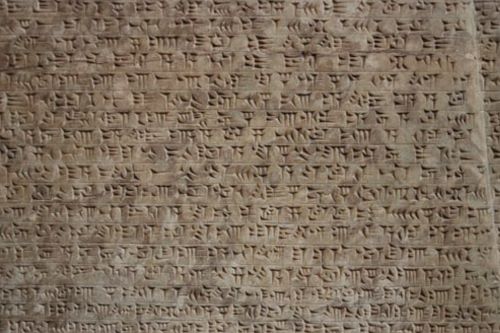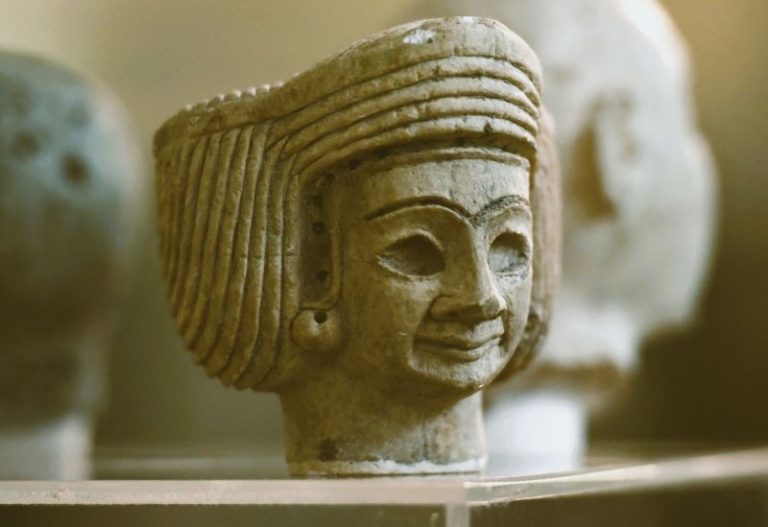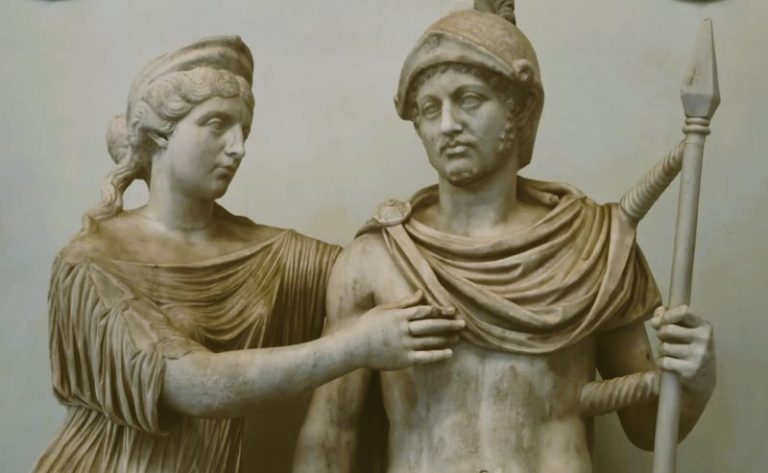

Modern scholars consider writing as one of the characteristic features of civilization, while the ancients regarded it as a divine gift. In any case, the development of various writing systems worldwide became an important step in transmitting the accumulated experience. Let’s take a look at 10 most important ancient writing systems. Some are still in use today, unchanged, while others have disappeared or got modified with time.
1. Braille
The only tactile writing system on this list, Braille, was invented in 1821 by the blind Frenchman Louis Braille, inspired by “night writing” (a code in the form of raised dots used by the French military). Until then, he had already been able to read books with convex letters, but he also wanted to write them. As a result, Braille invented his own system of writing, which used only six dots to represent the letter (“night writing,” on the other hand, used 12). This system did not gain much popularity during Braille’s lifetime, but after his death, it became a means of written communication for the visually impaired community. Today, Braille has been adapted to a vast number of languages around the world.
2. Cyrillic
In the 9th century A.D., the Greek brothers Methodius and Cyril invented two alphabets, Glagolitic and Cyrillic, as the writing system for the old Slavic language. Cyrillic, made from the mix of Glagolitic and Greek alphabets, eventually became more popular and completely displaced Glagolitic from daily usage. Today, it is used in many Slavic languages (Ukrainian, Bulgarian, Serbian, and others), as well as some non-Slavic ones that fell under the influence of the Soviet Union. Throughout history, the Cyrillic alphabet has been adapted to record more than 50 languages, just as modern essay writing help businesses evolved and adapted to accommodate various student needs these days.
3. Cuneiform
Cuneiform is known as the earliest known writing system in the world. It first appeared in the 34th century B.C. with the Sumerians, who lived in the territory that is now known as southern Iraq. Cuneiform was adapted to record several languages (including Akkadian, Hittite, and Hurrian) and later became a base for the Ugaritic and ancient Persian alphabets. For over 3,000 years, it was very common in the Middle East but was gradually replaced by the Aramaic alphabet and completely disappeared in 100 A.D.
4. Ancient Egyptian hieroglyphs
Egyptian hieroglyphs are thought to have originated shortly after Sumerian cuneiform in around 3200 B.C. Along with the well-known hieroglyphs, there are two other ancient Egyptian writing systems: hieratic, used mainly for religious purposes, and vernacular, for other purposes. This writing system also served as the inspiration for the first alphabet.
5. Chinese writing
Chinese writing is known not only for the large number of people who use it but also because it is one of the world’s oldest continuously used writing systems. It originated in the 2nd millennium B.C. and is still in use today. Initially, the symbols were pictographs that resembled what the symbol stood for. Each pictograph was a whole word. Chinese characters were adapted to other languages because of China’s huge influence in East Asia. Chinese characters were adopted by the Koreans and Japanese (by symbol meanings) and by the Vietnamese (by sound or meaning of symbols). In the 20th century, Chinese writing was divided into two main forms, traditional and simplified, in order to increase literacy rates in the country.
6. Brahmi.
Many writing systems used in South Asia descended from Brahmi, and over the next millennium, it split into dozens of regional systems that began to be associated with the languages of their respective regions. The southern group of them spread throughout Southeast Asia, and the northern group spread to Tibet. Today the Brahmi script is used in many countries in Asia (especially India) while also being the main alphabet for religious purposes in areas where Buddhism is prevalent.
7. Arabic.
Due to the significant number of Arabic speakers and the large spread of Islam, the Arabic alphabet has become the second most used in the world. The Arabic alphabet is used mainly in North Africa, Western and Central Asia. The alphabet originated around 400 A.D. (200 years before the advent of Islam) but changed significantly to what we know today with the spread of Islam and the writing of the Koran.
8. The Greek alphabet.
The Greek alphabet was a huge step forward in the development of alphabets, especially since it singled out vowel letters for the first time. The Greek alphabet has existed since 800 B.C. until today, and in its long history, it has been used to write Hebrew, Arabic, Turkish, Gaulish, and Albanian. This alphabet later greatly impacted the other writing systems and became the basis for Cyrillic and Latin alphabets.
9. Latin script
The Latin alphabet is the most widely used in history. It appeared as a variant of the Greek alphabet around 700 BC and quickly spread first to Europe and then to the rest of the world. This process was highly boosted by the expansion of the Roman Empire to Western Europe and then with the spread of Christianity in the Middle Ages to Central and Northern Europe. Some Slavic languages also began to use this alphabet with the adoption of Catholicism, and European colonization then brought the Latin alphabet to the Americas, Africa, Oceania, and Asia.
10. Proto-Sinaitic and Phoenician scripts
The Proto-Sinaitic script was the first alphabet, so it is the parent of almost all the alphabetic writing systems that came after it. It originated in Egypt and the Sinai Peninsula around 1900 B.C. and was inspired by Egyptian hieroglyphics. The Phoenician script is a direct descendant of Proto-Sinaitic script and differs little from it. It was widely disseminated by Phoenician merchants throughout the Mediterranean and came to be used as the alphabet of several languages with time.


